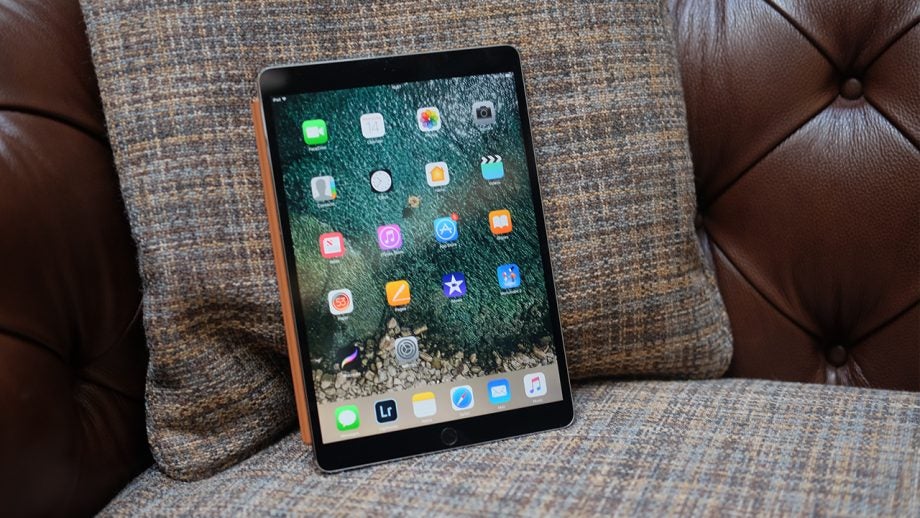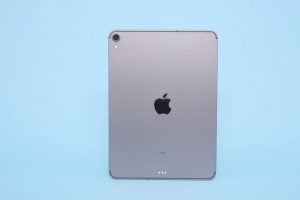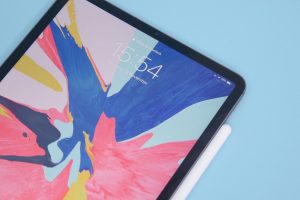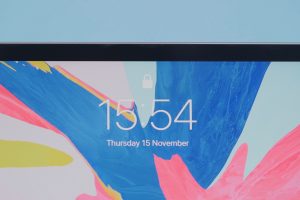iPad Pro (2018) Review
iPad Pro (2018) Review
So much potential

Sections
- Page 1 iPad Pro (2018) Review
- Page 2 Apple Pencil 2 and Smart Keyboard Folio Review
- Page 3 Battery life, performance and verdict Review
Verdict
A stunningly built tablet that needs a better operating system to really make the most of all the power contained within.
Pros
- No other tablet is designed to this standard
- I want a ProMotion screen on every device
- Powerful and decent storage options
- The switch to USB-C is a positive one in majority of instances
Cons
- High price, plus equally high price of accessories
- Software needs to be improved to make proper use of the hardware
Key Specifications
- Review Price: £769
- 11-inch or 12.9-inch ProMotion display w/ 120Hz refresh
- Apple A12X Bionic CPU
- 4/6GB RAM
- 64GB/256GB/512GB/1TB storage
- Apple Pencil and Smart Keyboard Folio support
- USB-C
What is the iPad Pro 2018?
Apple’s 2018 version of its iPad Pro is gorgeous – and full of potential. It’s the most powerful tablet we’ve used by some distance, and demonstrates that Apple remains at the top of its game when it comes to industrial design.
There’s so much on offer here, yet we keep coming back to the word “potential”. There’s not doubt that Apple has built a dominating tablet, but it’s a device that feels hamstrung by software that can’t match the hardware – and that might just make it a difficult sell.
iPad Pro 2018 – Design
Apple’s design template has changed considerably over the years. From the flat sides and angular nature of the iPhone 5 to the more curvaceous iPhone 7 and iPhone X. Oddly, the iPad Pro 2018 feels like a return to the iPhone 5 design, which is far from a bad thing.
Gone are the soft lines and curved edges of just about every previous iPad, to be replaced by rounded corners, harsh edges and a flat back. It’s a glorious piece of engineering that proves Apple is still the best when it comes to industrial design.
Related: Best tablets

The only off-putting part of this design are the scraggly antenna that wind around the sides and back. They’re prominent on both the LTE/4G and Wi-Fi options of the device, and while a necessity to ensure good reception, they’re ugly.
The tablet continues to be built from a mixture of aluminium and glass, and feels intricately put together. Everything from the speaker holes to the USB-C port has been machined and perfectly finished, while the two colours – Space Grey and Silver – are subtle and classy.
On the one hand, I’d love the option of an iPad that comes in a vast array of colours like the iPhone XR. However, it would feel completely at odds with the rest of the design.

There are two versions of the iPad Pro 2018 available: one with an 11-inch screen and another with a 12.9-inch. The 11-inch model is roughly the same size as the 10.5-inch from 2017, whereas the 12.9-inch option is noticeably more manageable than its predecessor.
As can be seen with the recent iPhones, the iPad Pro 2018 models aim to reduce the bezel as far as possible, pushing the display right out to the edges. It just about succeeds, and feels far more modern in the process. A bezel surrounding the screen remains, though, but this just means you have somewhere for your finger to rest.
Look around the sides of the iPad Pro 2018 and you’ll see only one port. USB-C replaces both the Lightning connector (the port you’ll find any every recent iPhone, iPad and accessories such as the AirPods) and the headphone jack. Losing a headphone jack on a tablet seems odd, and having only one USB-C port suggests you’ll need to invest in a set of dongles right away to fulfil basic tasks such as charging and plugging in headphones at the same time.

I think the move to USB-C will prove a positive for most. Some might be annoyed by the inability to charge an iPhone, AirPods and iPad using the same cable, but there are plenty of benefits – which I’ll cover in the Software and Performance sections of this review.
Another significant difference between the 2018 iPad and previous models is the lack of a home button. Navigation on this tablet is through a series of swipes and gestures, and you unlock the device via Face ID.
Face ID on the iPad Pro is even more advanced than on the iPhone XS, working in every orientation and alerting you when you’re blocking the relevant sensors.
iPad Pro 2018 – Screen
The MacBook Air range recently saw an update to a Retina display, so each of Apple’s biggest product categories is now available with a gorgeous screen. However, the iPad Pro 2018 might just be the best yet.
This is mostly down to a feature called ProMotion. ProMotion allows the screen to intelligently switch refresh rate, from 24Hz for video, all the way up to 120Hz for smooth scrolling between homescreens and accurate drawing.
The effects of ProMotion are superb, and those who have been using this screen for a while will certainly find it difficult to return to a regular display, which typically refreshes at 60Hz. Games look smoother and strokes of the updated Apple Pencil feel more fluid.

ProMotion isn’t solely responsible for elevating this display. Apple’s True Tone tech adjusts the panel’s colours to your surroundings, reducing harsh whites to offer a softer look when you’re in a dark room, for example. Note that since True Tone alters the colour accuracy of the display, it is best turned off for tasks such as photo and video editing – but, for everything else, it makes viewing the panel far more comfortable.
Whether you choose the 11-inch or the 12.9-inch iPad Pro 2018, you’re getting the same Liquid Retina tech and a ppi (pixels per inch) of 264. I’ve spent time with both devices and, size apart, they look indistinguishable. Colours are gorgeous and vibrant, details rich and the slim bezel makes the whole experience more immersive.
Apple has used the anti-aliasing tech and software tweaks applied to the iPhone XR to perfectly round the corners – and, once again, the company ensures there are no stray pixels ruining the curvature.

The company has chosen to go with LCD, as opposed to OLED, for its iPad Pro line. This is a shame, since a large OLED with all these features would have been something truly magnificent.
OLED offers greater contrast and perfect blacks, and also allows for better representation of HDR (high dynamic range) content.
Apple isn’t claiming these LCD displays are HDR ready; however, they can play back HDR sources such as Netflix and iTunes. This isn’t a perfect solution, but there remains a notable difference.
How we test tablets
We test every tablet we review thoroughly. We use industry standard tests to compare features properly and we use the tablet as our main device over the review period. We’ll always tell you what we find and we never, ever, accept money to review a product.


